By: Brendan Batty
Buying a new caravan or camper trailer is a glorious thing. As part of the process, you get to choose every aspect of how you live on the road.
From what sort of bed you like to sleep in and kitchen you cook in, to how far you want to take it off the beaten track. There’s nearly an unlimited amount of choice.
But there are some limits, most of which are imposed by the vehicle you want to travel in. These limits are put in place by vehicle manufacturers to ensure their vehicles don’t give up the ghost and can keep you safe.
But navigating those limits can often be confusing, as there are many different, often similar-sounding terms, weights and measurements. And some of them are so obscure they’re rarely mentioned in sales material.
To help you make the right choices when matching your car to your dream towable, we’ve pulled together the most important calculations and considerations you need to be aware of about towing capacity. Sticking within these limits will mean you stay legal*.
RELATED:
Getting your caravan's weight distribution right »
RELATED: Tips for buying your first caravan »
The tow vehicle weights that matter
Whether you’re planning to tow with your current vehicle or buy a new one, you’ll need to know its Maximum Braked Towing Limit. This is the upper limit of what a vehicle is allowed to tow if the trailer has its own braking system. This will set a limit on what caravan or camper you can buy because you can’t tow anything heavier than this limit. And that’s an expensive way to solve a problem.
If you’re buying a trailer that isn’t fitted with brakes, you’ll need to know the Maximum Unbraked Towing Limit of your car. Simply, this is how much the unbraked trailer, including its load, can weigh. Usually, this applies to smaller garden and box trailers, some lighter camper trailers, and some vintage caravans. Most of the time this limit is 750kg, but many smaller capacity vehicles and most EVs are more limited in what they can tow – some as little as 350kg, if anything at all.
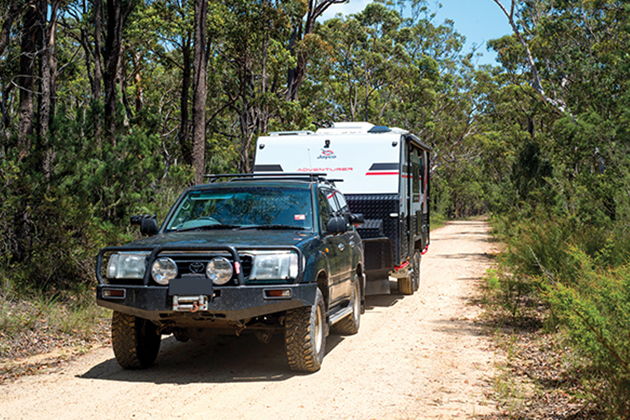
Given the nature of box trailers, this limit is very easy to exceed inadvertently. Half a tonne of dirt for the garden in an average 7x5 box trailer is likely to be at least 750kg. Helping a mate move house – beds, couches and fridges stacked sky-high – might also do the same.
The next most important value is Gross Combination Mass. GCM, as it’s often abbreviated too, is the maximum total combined mass of a vehicle, its load including fuel, passengers, their gear and the total weight of any trailer it’s towing. Like the previous two values, this is specified by the vehicle manufacturer, and it can’t be increased.
Vehicle manufacturers use a range of criteria to work this out so it may not just be the sum of a vehicle’s GVM (see below) and Maximum Braked Towing Limit. Usually, a sacrifice has to be made so that if you’re towing the maximum allowed, you can’t carry a full load in the vehicle, or vice-versa. Overstepping this would put too much stress and load on the vehicle’s engine, transmission, suspension, and most importantly, braking system.
If you’ve found out the GCM of a vehicle (which is sometimes hard to find out), you’ll have come across its Gross Vehicle Mass. GVM is the maximum allowable mass of a vehicle, as set by the manufacturer. The car, including its passengers, luggage, fuel, and weight on the tow ball can’t weigh more than this. However, it is possible to have this limit increased, in some circumstances, with modifications to the vehicle.
If you are chasing towing capacity, though, a GVM upgrade rarely improves the situation, thanks to the inability to increase either the GCM or maximum braked towing limit.
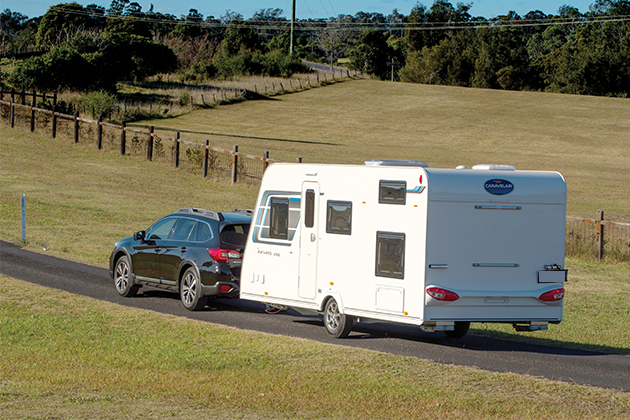
Just as crucial as the GVM is the vehicle’s Kerb Weight. Generally, kerb weight is the unladen mass of a car, with all fluids and a full tank of fuel, as it sits on the kerb waiting for you to drive it. Alternatively, Tare Weight is the mass of a vehicle with all fluids and only enough fuel to make sure it runs, which is usually around 10 litres.
The difference between kerb weight and GVM is the vehicle’s Load Capacity, a measure of how much it can carry including passengers, luggage, aftermarket or optional accessories and any weight on the tow ball.
The load capacity will be partially eaten up by the weight of the trailer’s hitch. All vehicles will have a Maximum Tow Ball Mass, limiting how much weight can be directly applied to the tow ball. In some vehicles, like the Nissan Patrol or Mitsubishi Pajero, this limit is on a sliding scale, whereby the more load you have in the car, the less you’re allowed on the ball.
The most popular towing vehicles allow 10 per cent of the maximum braked towing limit as the maximum tow ball mass, but some European cars are much more conservative.
Just in case it was all starting to make sense, it can be valuable to know the front and rear Maximum Axle Weights. These are not often discussed around the campfire, but axle weights are measured as the mass on each axle when weighed independently. If you wanted to know the rear axle weight, you’d only park the two rear wheels on the scales, for example.
It’s entirely possible for the rear axle to be overloaded, even if the vehicle is under GVM. That is, after all, where the tray, boot or wagon space is typically, and so tends to be where we put most of the stuff we take on holidays. It’s exceptionally common in dual-cab utes; nearly all of their cavernous load space is behind the rear axle. It might be called a ‘1 tonner’, but be assured, some of that tonne needs to be further forward on the car than in the tray.
Once you have established what your car is capable of, you can start searching for a caravan or trailer that won’t push those limits.
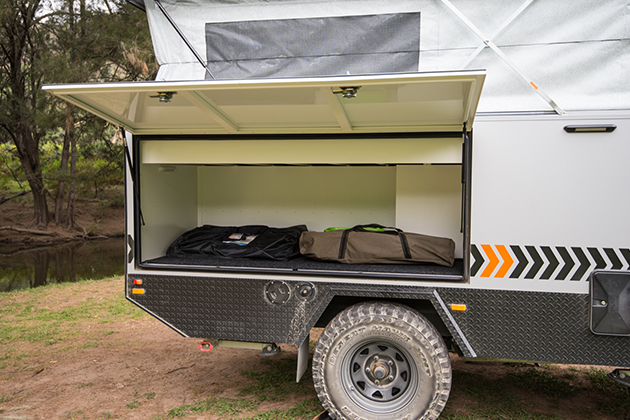
RELATED: How to reverse your caravan without a spotter
The trailer weights that matter
All caravans have an Aggregate Trailer Mass. Abbreviated to ATM, this is the trailer equivalent of GVM – the maximum allowable mass of a trailer, as set by the manufacturer. The trailer and its load (be that boat, water, luggage, garbage for the tip or anything else) can’t weigh more than this and be considered legal.
In general, the ATM of a braked trailer for use behind a regular vehicle won’t be more than 3500kg. If it doesn’t have brakes, this limit will be 750kg or less.
It’s important to note that ATM and the maximum towing capacity of a vehicle aren’t explicitly linked. A car with a maximum towing capacity of 3000kg could tow a caravan with an ATM of 3500kg provided the trailer weighs 3000kg or less when it’s being towed. On the flip side, it is illegal for a vehicle with a 3500kg maximum braked towing limit to tow a 3500kg trailer with a 3000kg ATM; the trailer is overweight.
Another important term is Tow Ball Download. Often called tow ball weight, ball load or hitch weight, this is a description of the actual mass the caravan applies at its hitch. When a caravan manufacturer quotes it, it’s usually the figure as measured when it left the factory, and carries no legal clarity, unlike a car’s tow ball limit.
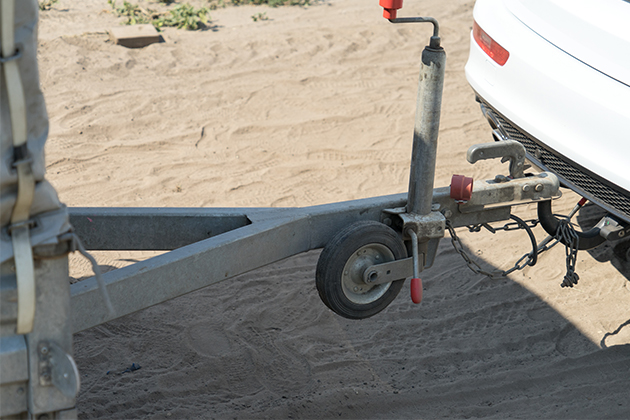
Ball load is a variable weight, as what and where you load things into the trailer will affect it. For example, the tow ball mass could increase with water in the tanks. Although a positive tow ball mass is inherent to caravan stability, too much is a bad thing. In general, a happy medium aims for a tow ball mass that’s 10 per cent of the trailer’s weight while under tow. A little more or less is fine, where the vehicle’s limits allow it.
It’s also important that the tow ball mass doesn’t cause the car’s front end to rise significantly. Any weight added behind the rear axle levers the front of the car up, reducing braking performance and steering feel. It might also overload the maximum axle weight in the rear.
An imbalance between the front and rear axle weights is one of the biggest causes of towing instability, poor braking performance or poor steering feel. Although a weight-distribution hitch can help level the ride, a lighter, smaller caravan that’s not pushing the limits of what vehicle marketers say it can tow is far better.
Finally, a caravan also has a tare weight. This is usually the trailer’s weight as it left the factory floor and could be before the dealer or seller fitted extras. There is far less scrutiny on trailer manufacturing, which combined with a much higher level of customisation available to the end-user, makes specified weights like tare and tow ball mass much less reliable than weights quoted by the auto industry. If you are unsure, get it weighed.
The difference between kerb weight and ATM is the caravan’s load capacity, the measure of how much you can load into the caravan, usually including any water or gas. The industry standard is to offer at least 400kg, but some offer far more.
All of this can seem arbitrary, but there can be serious consequences for overstepping any of these marks. The least serious of these is increased mechanical wear. Overloading your car or caravan will shorten the lifespan of your tyres, brakes and engine, as well as the distance you can travel between fuel stops. And knowledge that your car has been towing a big load might affect its resale value.
More seriously, adding weight to your vehicle increases the distance it takes for it to stop, by a lot. An SUV travelling at 60km/h without a trailer should come to a stop in around 15m. That jumps to 25 to 30m with a 2.5-tonne caravan attached. At 100km/h, it will take well over 100m to come to a complete stop, including reaction time. Shouldn’t we do everything possible to reduce that?
If you want to play around with how weights and towing limits affect your car, there’s a calculator at Time To Roam. By inputting many of the weights we’ve discussed, you can see if you’ll be overstepping any of your car or caravan’s limits. There are also several consumer-grade vehicle scales, like the Reich Caravan Weight Control, which are inexpensive tools to keep you on the safe side of vehicle weights.
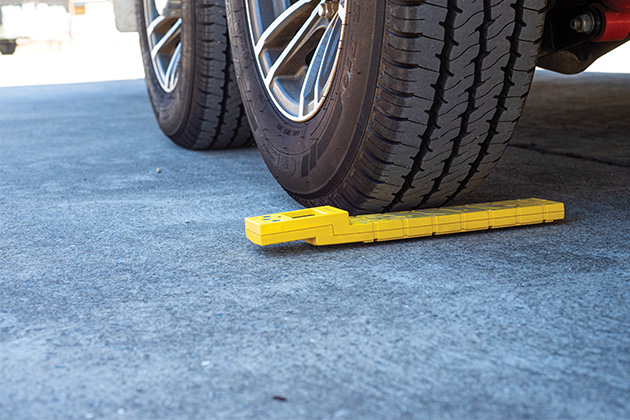
Why didn’t you mention Gross Trailer Mass?
Gross Trailer Mass is often quoted by manufacturers or found on compliance plates. GTM is the mass of the trailer, minus the tow ball download.
It’s only relevant when the trailer’s axle capacity isn’t higher than the ATM (that’s almost never the case, and usually only with single axle trailers), and so the hitch has to carry the extra weight, or risk overloading the axle.
*It can be tempting to believe the marketing hype that says 3500kg is child’s play for the modern SUV or dual cab ute. It’s not. The fact is, a 3.5-tonne trailer is almost certainly heavier than the vehicle towing it. If you have never towed before, or even if you have, very carefully consider your need to haul something that large and heavy.
The caravanning experience will be much better if you’re not constantly dreading the drive to the next location or harbouring the regret of purchasing a caravan that only sits in your driveway because it’s too daunting to tow.
Cover for your caravan
Get ready to travel the open road with RAC. Our caravan insurance includes cover for accident, fire, theft, and contents, plus off-road use.
Disclaimer: Issued by RAC Insurance Pty Limited. Check the PDS & TMD at rac.com.au.
Last updated: February 2021
